When it comes to enjoying video content, we all want the best possible experience, right? This is also the case in the world of streaming. So, the talk about HD vs. SD streaming is still a hot topic among streamers because both affect how satisfied viewers feel. But what is SD streaming?
In short, SD streaming means broadcasting content at 480p resolution, which used to be standard on TV. On the flip side, HD streaming can go all the way up to 1080p, delivering amazingly sharp video.
Now, you might think, “If HD streaming offers better video quality, why bother with SD?” Well, that’s what we’re here to explore. Remember, when streaming, you need to strike a balance between quality and a smooth streaming experience.
So, without further ado, let’s jump into SD vs. HD streaming and see which is right for you!
What is SD Streaming?
SD is short for Standard Definition. SD streaming is the way to deliver content over the internet with a resolution of 480p, which used to be the standard for broadcasting.
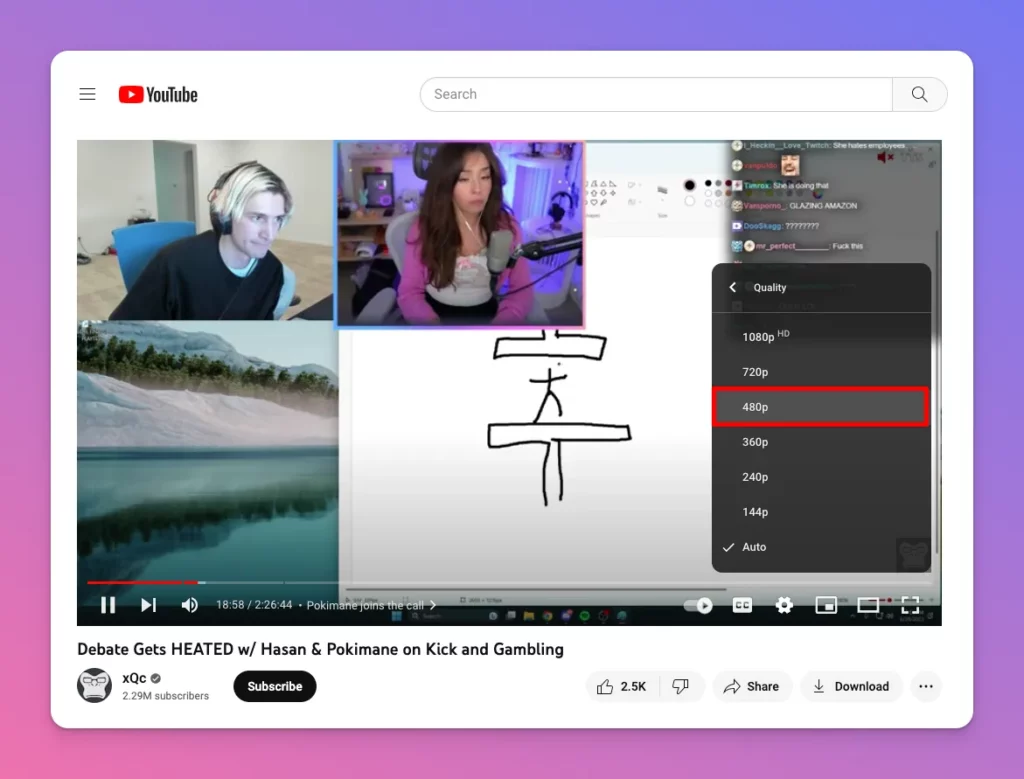
So, why did 480p become the standard? Back in the analog days, both NTSC and PAL TV systems had 480 lines of vertical resolution. That was the bare minimum for making content on TV look great.
You can think of your screen as a grid. With 480p, you will have 480 rows of pixels. The ‘p’ in 480p stands for progressive scan, where all image lines are shown in order.
This approach differs from the interlaced scan, where odd lines are shown first, and even lines follow. The progressive scan method helps avoid flickering, resulting in a better experience when consuming content on screen.
To make the long story short, Standard Definition became the go-to for a while because it found a sweet spot between quality and the technological limitations at the time.
It turns out that it goes for online streaming as well. When we moved to the digital era, we continued to use 480p standards until internet technology could ensure a stable internet connection.
Read More: What is Good Internet Speed Needed for Streaming?
Even with the introduction of HD or even 4K resolution, many content creators are still weighing their options in choosing platforms that provide adaptive streaming. With this technology, viewers can still enjoy the content at a 480p resolution, making those with a slower internet connection aren’t left out.
What is HD Streaming?
HD streaming stands for High Definition streaming. It is considered the modern standard for delivering content in a superior resolution compared to 480p.
High Definition streaming means your content is displayed in either 720p or 1080p. The latter is often referred to as Full HD resolution, providing double the sharpness of standard HD.
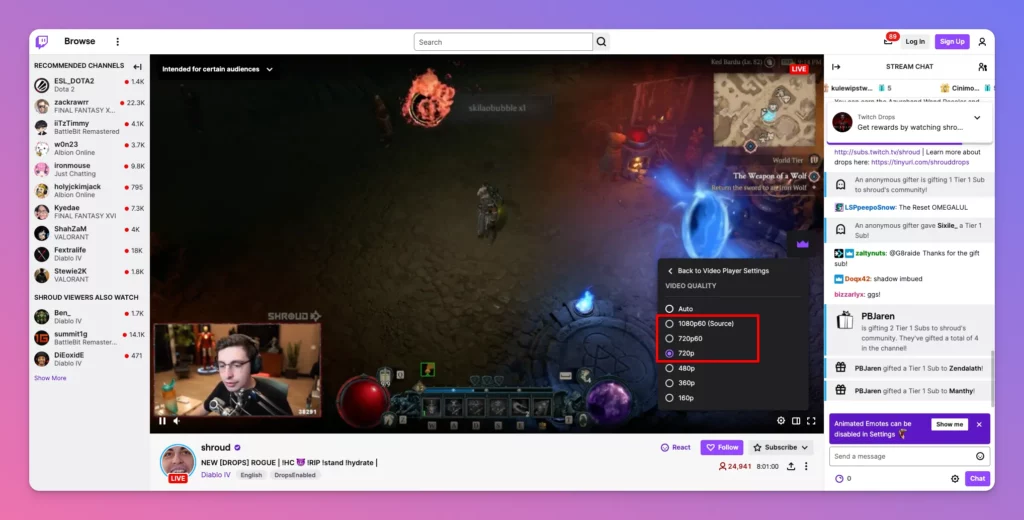
As you may have guessed, High Definition offers a higher level of detail. This option is perfect for documentary videos, live sports events, action movies, gameplay live streams, and more.
Regarding the HD vs. SD streaming debate, High Definition streaming is a clear winner in terms of video quality. This is why many creators have shifted from relying on their built-in webcams to using DSLRs for streaming.
They use that approach to produce live and VOD streaming content, ensuring their content is more captivating for viewers.
Does this mean you should jump straight to the HD-only option? Well, yes and no. Yes, if you want to produce the content at a decent quality. But no, if you want to reach as many viewers as possible around the world. Why is that?
Streaming is not only about how your video quality is but also how your viewers can enjoy the content. Opting for higher quality only comes with a trade-off. HD consumes more data compared to SD streaming.
This won’t be an issue if all of your audience has a solid internet connection. Otherwise, HD streaming might result in buffering and ruin the fun.
It doesn’t matter how awesome your content is. A buffering experience is never enjoyable for viewers with a not-so-good internet connection.
With that in mind, when considering HD vs. SD streaming, it’s important to understand the nature of your content and how your audience will enjoy it. Then, strive to find the perfect balance between the two.
Again, using a platform with adaptive bit rate streaming can save your day.
Read More: What is HLS streaming?
HD vs. SD Streaming: The Differences
Let’s break down the differences between HD vs. SD streaming:
1. Resolution and Aspect Ratio
When it comes to HD vs. SD streaming, the key difference lies in their resolutions and aspect ratios.
Resolution refers to the number of pixels in each video frame. SD streaming has a resolution of 640×480 on a standard screen, while HD streaming offers resolutions of 1280×720 for standard HD and 1920×1080 for Full HD.
You can simply refer to resolutions by their vertical value, such as 480p, 720p, and 1080p.
Meanwhile, aspect ratio refers to the ratio between the width and height of a video. It’s stated in two numbers separated by a colon, like 16:9 or 4:3. The first is the width, while the second is the height.
Remember, when we refer to 480p as a 640×480 resolution, we talk about a 4:3 aspect ratio. On the flip side, 1280×720 follows the popular 16:9 aspect ratio, which has become the standard for modern monitors, smartphones, and TVs.
Here’s the table to help you grasp the information more easily:
| Resolution | 16:9 | 4:3 |
|---|---|---|
| 480p | 854×480 | 640×480 |
| 720p | 1280×720 | 960×720 |
| 1080p | 1920×1080 | 1440×1080 |
Even though it may seem like a technical detail, as a streamer, it’s important to grasp this concept to connect with your target audience.
Read : 30+ Recommended Content Creation Tools
2. Quality
When comparing SD vs. HD streaming, quality is absolutely a hot topic. It’s all about how awesome the video looks to your eyes. Of course, the resolution will be a part of the discussion.
HD streaming gives you higher-resolution video content, meaning more detailed visuals. This is super important, especially when you’re watching a sports game. You get to see the players’ faces and moves with great precision.
On the other hand, SD streaming is limited to 480p resolution. You can still enjoy the content, but the details take a hit.
Let’s say you’re watching TFue play Fortnite on Twitch. You can see him leaping from one roof to another, but you won’t catch the fine details of the ornaments on the buildings he enters.
It won’t ruin the fun of watching the gameplay, but it might make the live streams less immersive for you. And that is what you need to think about if you want to jump into the streaming game.
3. Data Usage
Whether you are streaming in HD or SD resolution, you’re basically downloading data as you go. How much data you use really depends on the type of streaming you’re doing.
It’s like building a house with Lego, where each brick represents a piece of data. The more bricks you have, the more data you’ll use.
With that in mind, SD streaming relatively uses fewer data because it’s like building a house with fewer bricks. This is a good option who want to use data efficiently or have a slow internet speed.
On the contrary, HD streaming requires more data to deliver a more detailed picture. If you’re on a limited data plan, HD streaming can quickly use your data allowance.
Bear in mind that most streaming platforms always have an automatic resolution by default. It means they will give you the best resolution based on your internet speed.
To put into perspective, the data usage of YouTube streaming at 480p is 562.5MB. When you go for 1080p at 60FPS, it can use up to 3.04GB per hour. Wow, what a contrast!
4. Bandwidth
Bandwidth is the amount of data your internet connection can handle at once. It relates to the data usage, bit rate, and transfer speed.
You need to consider the difference between SD streaming vs. HD streaming to ensure your live stream can go successfully. First, think of bandwidth like a highway. The wider the street, the more cars it can handle at once.
SD streaming is like driving a small car in the street, while High Definition streaming is like having a truck to commute. When the road is small, the car can go without any issues, but the truck may experience interruptions here and there.
Then, imagine if there are many cars on the street at the same time? It can go but at a slower pace. However, the truck may get stuck in a traffic jam for hours.
In the streaming world, that’s what is going to happen as well. That’s why most streaming platforms have suggested bandwidth to ensure a comfortable streaming experience. With YouTube, you can go with only 500 kbps, while Netflix requires at least 3 Mpbs for you to enjoy on-demand streaming content there.
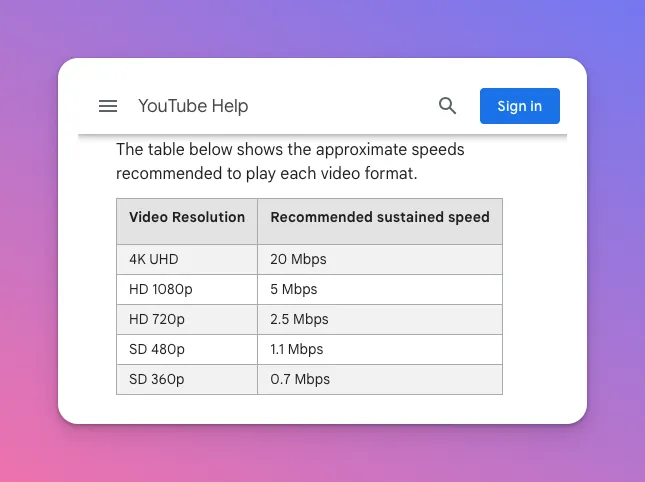
Read More: What is VOD Streaming
5. Device Compatibility
The choice between HD vs. SD streaming can really impact your audience reach. The reason is viewers use a variety of devices. Some might watch on new smartphones or smart TVs, while others could use older devices.
So, if your streaming resolution is compatible with most of those devices, you have the chance to attract a larger viewer base. You don’t have to know exactly what devices they’re using, but that’s a good thing to keep in mind.
SD streaming can be considered a great choice because it ensures that all viewers can access your stream. The 480p is like a basic resolution for most platforms to provide a better viewing experience for everyone, even those with slower internet connections.
However, keep in mind that most devices today are HD-ready. That means they can handle the highest resolution creators offer through the platform.
HD streaming can cause some trouble to viewers with slower internet connections. On the flip side, SD streaming might not deliver the best viewing experience when watched on big-screen TVs.
6. Content Type
It’s hard to discuss HD vs. SD streaming without considering what kind of content you’re producing. It plays a significant role in deciding whether to go for HD or SD.
If your focus is on information delivery, like talk shows, or live commentary streams, SD streaming is an easy pick. You don’t necessarily need visual effects and intricate details for that kind of content.
In this case, what really matters is clear speech and an uninterrupted stream. So, you’ll want to get yourself the best streaming microphone for awesome content delivery.
On the other hand, for visually rich content like a video game with stunning graphics or a soccer match where every detail counts, HD might be the way to go. In these situations, the enhanced image quality of HD can truly elevate your viewers’ experience.
Here’s a tip: Ask yourself, “Will my content benefit from the extra detail and clarity that HD offers?” That answer will help you make the right choice.
7. Cost
Creating content costs money. And that’s something to keep in mind when considering HD vs. SD streaming, especially if you’re a professional streamer managing your own business.
If you’re using free streaming platforms, you don’t have to worry about paying extra for higher-resolution video content. However, if you’re dealing with on-demand content that needs to be saved on the server, it may come with a certain cost or require you to opt for a premium plan on the platform.
What’s more, if you’re into HD streaming, you need to make sure that you have a solid internet connection. It requires higher bandwidth and faster data transfer speed. That usually means you’ll need to subscribe to a higher-tier plan from your internet service provider.
On top of that, to deliver a live stream with decent quality, you have to step up your equipment well. Let’s take streaming Fortnite on Twitch, for example. You’ll need a great gaming streaming setup, including an amazing camera, a powerful PC, proper lighting, streaming programs, and more.
In those situations, SD streaming is a clear winner as it will be more cost-effective than HD streaming.
When to Use SD vs. HD for Streaming
Now that you’re aware of all the differences, are you ready to make informed decisions on when to go for SD or HD streaming?
SD Streaming
You should SD streaming to make your content awesome if:
1. You Wish Everyone Could Watch
Unless you’re targeting a specific niche or group, SD streaming is your best bet. It’s the universal standard on most platforms and formats, making it accessible to people worldwide.
There are reasons why it’s great. The most noticeable one is platforms like YouTube and Twitch always offer an SD streaming option at 480p resolution. To put it into perspective, YouTube has 2.1 billion monthly active users, while Twitch has over 450 million monthly active users.
2. You Have Concerns About Data Usage
When you’re online, everything you do, from browsing to streaming, consumes your data. Unless you’re the lucky one with an unlimited data plan, you need to be mindful of your data usage.
Please pay attention that switching your resolution from 480p to 1080p can make your data usage skyrocket by a whopping six times for just a single video.
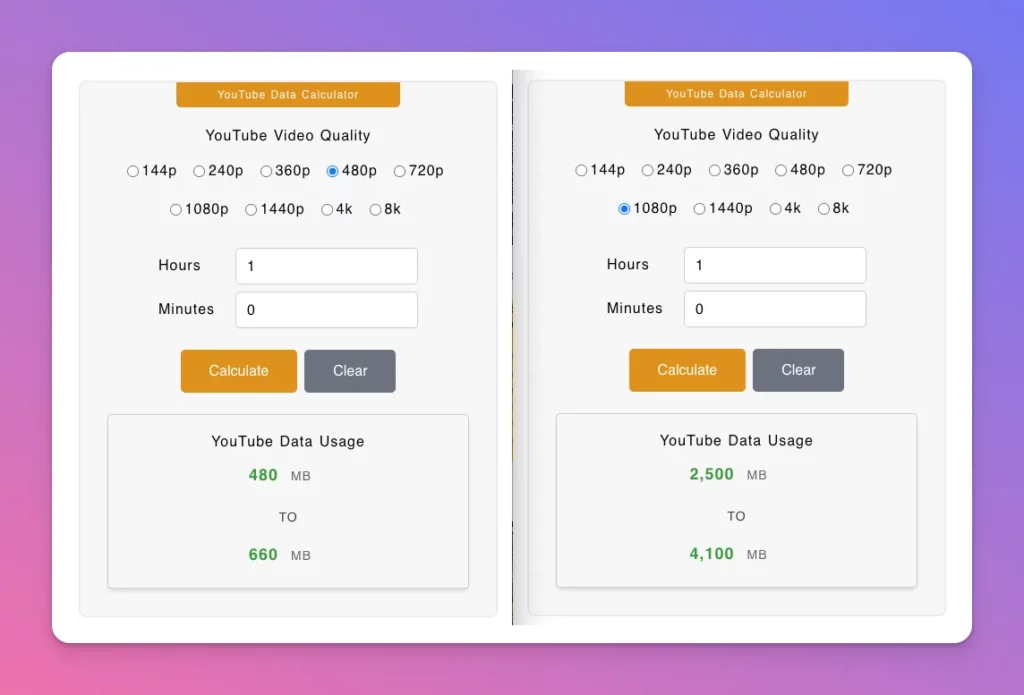
SD streaming is data plan-friendly. As a streamer, you can go longer without worrying about data limits and stay active on your favorite platforms. As a viewer, you can enjoy more streams and longer watch times without exhausting your data allowances.
3. You Have a Slow Internet Connection
If your internet is moving at a leisurely pace, SD streaming is the way to go. Attempting to perform HD streaming in such circumstances will only lead to frustrating buffering and inconvenient lags. And that’s not the delightful experience your viewers are hoping for.
While having a faster internet connection is wonderful, it’s optional for being an exceptional streamer. Even with a slightly slower internet, you can still stand out in the streaming world by optimizing your content for SD streaming. You can do that b exploring various creative content types.
Rest assured, as long as your content is awesome, you will attract a vast audience. That is more important in the SD streaming vs. HD streaming debate.
4. You are Targeting Mobile Users
If you specifically target mobile users, you should consider using SD streaming. According to Statcounter, 59.36% of Internet access comes from mobile devices as of February 2023. What does the data mean?
Most mobile users have limited data plans, meaning that they will prefer video content that can save their data usage. With that said, any SD streaming content will be more favorable for them.
What’s more, SD streaming requires less processing power to play the content on mobile devices. So it will not drain viewers’ mobile devices’ batteries fast. For those on the go with low battery life, SD streaming will always be their choice.
Sure, some people can spot the difference between 480p and 720p on smaller screens. But for a truly immersive experience with incredible visuals, they’d rather watch it on bigger screens like monitors or TVs.
5. You are on a Budget
SD streaming is a budget-friendly option for streamers. As it requires less bandwidth, you can go with cheaper Internet data plans while still maintaining a reliable connection.
What’s more, you don’t need to go for top-tier streaming setups with high-end DSLR cameras, professional-grade microphones, and premium streaming software. Most standard devices can produce great 480p videos with solid audio quality.
Also, some platforms offer free limited SD streaming services. This means you don’t have to upgrade your package just to deliver HD content to your audience. You can keep it simple and cost-effective.
Simply put, SD streaming is a more economical option, letting you deliver content without putting a dent in your budget.
6. You Stream About Low Visual Content
Go with HD streaming is fancy. But it only works on types of content that focus on great visuals. Your content might not always be visually intensive, though.
If you plan to host a talk show or a live commentary stream, SD streaming can be an excellent fit. This kind of content typically focuses more on dialogue and interaction. That said, the high-resolution detail isn’t critical.
In fact, the most important thing to keep in a talk show is the flow going smoothly without any pauses. It’s all about conveying ideas to your audience. If there is buffering, your live stream audience won’t be too excited.
HD Streaming
You have all the reasons to use SD streaming. But when should you use HD streaming instead?
1. You Have no Issue with Data Usage Limits
If you have a generous data plan, HD streaming is always an option. It allows you to deliver high-quality visuals to your viewers, regardless of the content you’re producing.
The rich details and sharp images greatly enhance the viewer’s experience, especially for gaming or art streams where texture and color clarity matter.
If nothing is holding you back from providing an HD stream, we recommend it. HD streaming can showcase a high level of professionalism. That’s important if you’re a pro streamer aiming to boost viewer engagement and retention.
2. Your Internet Connection is Fast
While data usage plays a role in image quality, a fast internet connection is vital for smooth streaming, especially if you have a reliable internet service provider with a stable connection.
HD streaming can be quite demanding in terms of data and bandwidth. But with your awesome internet speed, that’s not a problem. Wondering how much Internet speed needed for streaming in HD? Well, for 720p, you’ll need at least 3 Mbps, and for 1080p, at least 5 Mbps.
Of course, internet speeds vary depending on your location. However, the average internet connection speed worldwide has increased over the years. For fixed broadband, upload speeds can reach up to 35.54 Mbps, while for mobile connections, it can reach up to 10.30 Mbps.
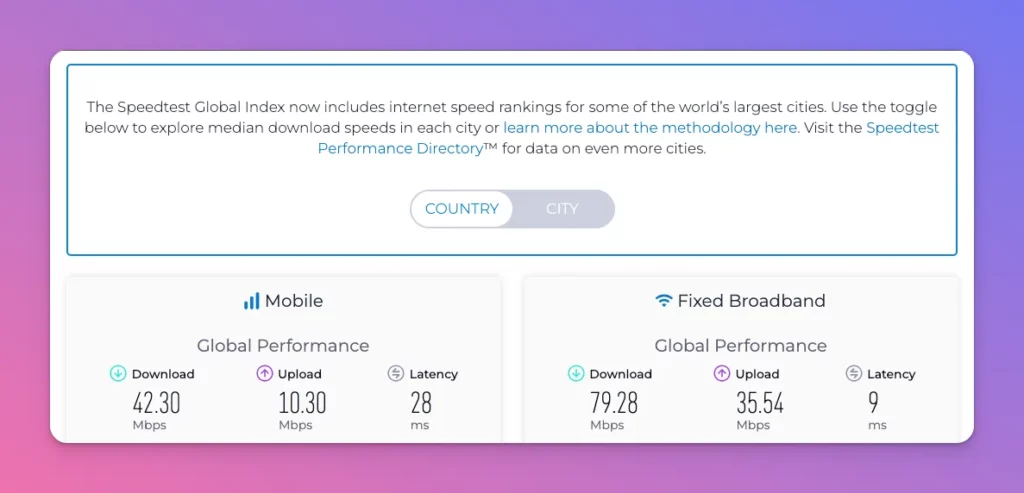
Simply put, streaming in HD quality has become easier than ever before.
Read More: Upload Speed for Streaming
3. You Create Visual Streaming Video Content
In contrast to SD streaming, if you’re into visually stunning content, like high-definition video games or art tutorials, HD streaming is where it’s at. It’s the perfect match for bringing out all the details to immerse your viewers and create an engaging stream.
You can do a bit of research based on your favorite platform. Twitch is said to have 56% traffic from desktop and 35% from mobile, while YouTube has more than 89% from mobile.
If most of your audience watches on big screens like monitors or TVs, the HD experience will impress them for sure. This is what you have to choose when producing that type of content. In short, when every pixel counts, HD streaming is your friend.
4. You are Offering Premium Content
As you can imagine, delivering premium content on a low-quality stream won’t cut it.
When it comes to the battle of HD vs. SD streaming for high-value content, HD is the clear winner. It’s not merely about the basic quality, SD streaming can take away from the top-tier vibe you aim for.
So, if you’re in the business of streaming high-quality content, be it private concerts or exclusive niche tutorials, HD streaming is your best option. Bear in mind that premium content usually comes with higher viewer expectations. And HD streaming is your ticket to meeting these expectations.
5. You Think About Future Usage
Just like 480p became a standard before turning obsolete, HD streaming is on a similar path. So, if you’re a streamer with a keen eye on what’s next, HD streaming seems like the way to go.
As technology moves forward, viewers are going to crave video content that’s crisper and more detailed. So, if you’re producing content on SD streaming, you might fall short of meeting those evolving viewer expectations.
In such a case, you must upgrade your content to match future streaming quality standards. And let’s be honest, that can be quite expensive.
In short, if there’s nothing holding you back from streaming in HD, then it seems wise to embrace it from the get-go. You’d be creating content that’s future-proof.
Final Thoughts on SD Streaming vs. HD Streaming
It all starts with a question: “What is SD streaming?” And guess what? We’ve covered all the answers as we dive into comparing SD vs. HD streaming. This has become a major topic for aspiring streamers.
We understand that choosing between the two involves considering factors like quality, data usage, bandwidth, device compatibility, cost, and more. And that can be overwhelming.
Luckily, you don’t have to start from scratch, as we have covered when to go for SD streaming and when to choose High Definition streaming. From there, you can then decide which option aligns with your current situation and goals. There’s no one-size-fits-all answer, though.
That’s a wrap-up for now. If you found this article informative and engaging, we encourage you to stay connected for future updates. Make sure to follow our blog!
FAQ about HD vs. SD Streaming
What is SD Streaming?
SD streaming is short for Standard Definition streaming, meaning you broadcast video content at a resolution 480p. This means the video has 480 vertical lines of pixels.
Having a less detailed image compared to High Definition, this resolution uses fewer data, making it ideal for streaming on a slow internet connection and limited data plans. SD streaming will mainly guarantee smooth streaming without buffering or data overages.
What is HD Streaming?
HD streaming is broadcasting video content in high-definition resolution. It can be in 720p or 1080p. The aspect ratio of 16:9 results in resolutions of 1280×720 and 1920×1080 pixels.
HD streaming offers better visuals than standard-definition streaming but requires more bandwidth and data. This option is ideal for viewers with decent internet speeds. However, it still can compare the quality of 4k streaming.
What is 4K Streaming?
4K streaming is broadcasting video content at a 3840 x 2160 resolution. The “4K” name comes from the horizontal resolution, which is around 4K, unlike the vertical calculation used in 480p.
This higher resolution delivers incredibly detailed and vibrant visuals, providing an immersive viewing experience. However, it’s important to note that 4K streaming demands a high-speed internet connection and consumes more data due to the increased quality.
Does SD vs. HD Matter for Streaming?
Yes, it does. The choice between SD and HD impacts streaming for sure. HD offers amazing image quality, making the viewer experience for visual content even more awesome.
However, HD streaming requires more bandwidth and data so it can lead to buffering on slower connections. So, the choice between SD and HD streaming is not that easy. They will rely on factors like content type, viewer’s internet speed, data limits, and more.
How are Video Resolution and Aspect Ratio Correlated?
Video resolution refers to the number of pixels that make up the image. This indicates the sharpness and clarity of the image. On the other hand, aspect ratio is the ratio of the width to the height of the image.
A change in aspect ratio can alter how the video fills the screen, that can sometimes cause a black bar on your monitor. The standard is 16:9, but you can also find devices with 16:10 or 21:9.
Meanwhile, changes in resolution affect the detail and clarity of the video and data usage. For instance, switching from 480p to 1080p involves a significant jump of six times in data consumption.








